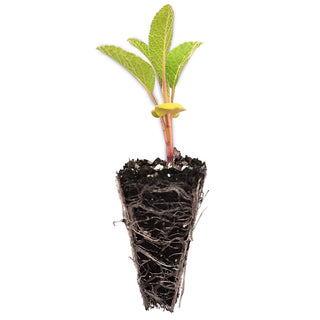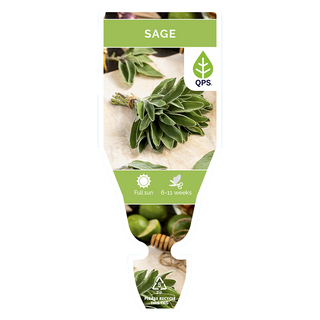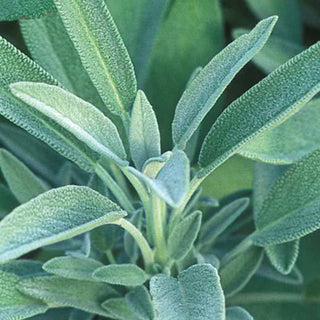Sage is a herb that is used for culinary and medicinal purposes, and it can be grown in a variety of conditions. Here are some of the optimal conditions for growing sage:
-
Soil: Sage prefers well-drained soil that is slightly alkaline, with a pH between 6.0 and 7.0. It can tolerate a range of soil types, but it will not grow well in waterlogged soil.
-
Light: Sage prefers full sun to partial shade, and it will grow best with at least six hours of direct sunlight per day.
-
Temperature: Sage is a hardy plant that can tolerate a wide range of temperatures, but it grows best in moderate temperatures between 60 and 70 degrees Fahrenheit. It can tolerate some heat, but it may wilt in very hot weather.
-
Water: Sage prefers well-drained soil that is kept evenly moist, but it is susceptible to root rot if the soil becomes waterlogged. It is best to water the plant deeply but infrequently to avoid overwatering.
-
Nutrients: Sage is a relatively low-maintenance plant that does not require a lot of fertilizer. However, it will benefit from a balanced fertilizer in the spring and fall, and it may benefit from a light application of compost or aged manure.
Overall, sage is a hardy and relatively low-maintenance plant that can be grown in a variety of conditions. It is a great choice for home gardeners who are looking for a versatile herb that can be used in a variety of dishes.
We are a proudly Australian-owned family business dedicated to providing high-quality seedlings, seeds, fruit trees, native plants, and indoor ornamentals. We offer express shipping to SA, VIC, QLD, and NSW, with local delivery and pickups available by arrangement. Unfortunately, due to restrictions, we are unable to send to TAS, WA, or NT. For OH&S and biosecurity reasons, farm tours and direct purchases are not available, and pickups can only be made at our farm gate entrance. We deeply value our loyal customers and thank you for your continued support.
Adding product to your cart
You may also like
Sage is a herb that is used for culinary and medicinal purposes, and it can be grown in a variety of conditions. Here are some of the optimal conditions for growing sage:
-
Soil: Sage prefers well-drained soil that is slightly alkaline, with a pH between 6.0 and 7.0. It can tolerate a range of soil types, but it will not grow well in waterlogged soil.
-
Light: Sage prefers full sun to partial shade, and it will grow best with at least six hours of direct sunlight per day.
-
Temperature: Sage is a hardy plant that can tolerate a wide range of temperatures, but it grows best in moderate temperatures between 60 and 70 degrees Fahrenheit. It can tolerate some heat, but it may wilt in very hot weather.
-
Water: Sage prefers well-drained soil that is kept evenly moist, but it is susceptible to root rot if the soil becomes waterlogged. It is best to water the plant deeply but infrequently to avoid overwatering.
-
Nutrients: Sage is a relatively low-maintenance plant that does not require a lot of fertilizer. However, it will benefit from a balanced fertilizer in the spring and fall, and it may benefit from a light application of compost or aged manure.
Overall, sage is a hardy and relatively low-maintenance plant that can be grown in a variety of conditions. It is a great choice for home gardeners who are looking for a versatile herb that can be used in a variety of dishes.
We are a proudly Australian-owned family business dedicated to providing high-quality seedlings, seeds, fruit trees, native plants, and indoor ornamentals. We offer express shipping to SA, VIC, QLD, and NSW, with local delivery and pickups available by arrangement. Unfortunately, due to restrictions, we are unable to send to TAS, WA, or NT. For OH&S and biosecurity reasons, farm tours and direct purchases are not available, and pickups can only be made at our farm gate entrance. We deeply value our loyal customers and thank you for your continued support.
You may also like
You may also like
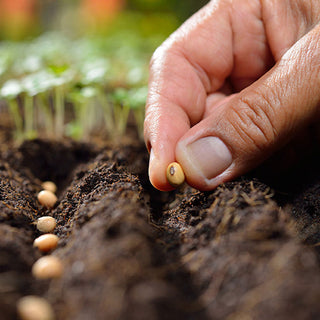
CERTIFIED ORGANIC
Commercial-grade certified organic seed boasts top-notch germination rates and yields, perfect for Aussie growers
Testimonials

QPS offers a wide selection of high-quality seedlings, including herbs, vegetables, and ornamental plants. They are known for their robust health and diverse variety, catering to all gardening preferences. With careful packaging and clear care instructions, Quality plants & seedlings ensures their plants arrive in good condition. They prioritise customer service and sustainability, making them a trusted choice for gardeners of all levels aiming to create thriving gardens.

Choosing QPS for my certified organic seeds was a game-changer for my garden. The variety of herbs, vegetables, and ornamental plants available exceeded my expectations, all grown with meticulous organic practices. The seeds arrived promptly and were clearly labeled with planting instructions, making the process smooth and stress-free. I've been impressed with the high germination rates and the healthy growth of the plants, reflecting QPS's commitment to quality. For anyone looking to start or expand an organic garden, QPS is my go-to choice for reliable, sustainable seeds.
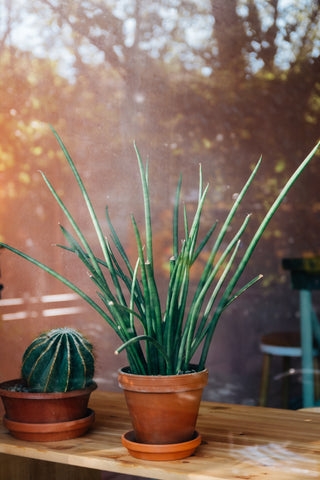
Sourcing wholesale indoor plants from QPS has been a fantastic experience for my projects as a landscape designer. Their extensive selection of indoor plants is of exceptional quality, perfect for creating vibrant interior spaces. Each plant arrives well-packaged and in excellent condition, reflecting QPS's attention to detail and commitment to customer satisfaction. Their competitive wholesale pricing makes them a preferred supplier for large-scale projects. I highly recommend Quality Plants & Seedlings to fellow professionals and enthusiasts seeking reliable, top-notch indoor plants for their designs.

Choosing QPS for seedlings at our school has been a great decision. Their diverse range includes everything from vegetables to ornamental plants, all nurtured with care using organic practices. The seedlings arrived promptly and were well-packaged with clear instructions, making them easy for students to handle and plant. We've been pleased with the robust health and rapid growth of the plants, which has enhanced our educational gardening initiatives. QPS's commitment to quality and sustainability makes them an ideal choice for schools looking to cultivate a green thumb in students.
Recommended products
We offer express postage straight to your door, servicing SA, VIC, NSW, and QLD. Click & Collect is also available—please note, no walk-ins allowed.
Our seedlings ensure seamless transplanting with minimal crop stress for optimal growth and yield.
Our Australian customers trust us for seedlings that deliver high yields and strong root growth, proven by their loyalty and repeat purchases.
We are PCI compliant by default so you can keep payment info and business data safe.

🌱 In the Garden with Christie Cooper – Aussie Green Thumb Reporter



